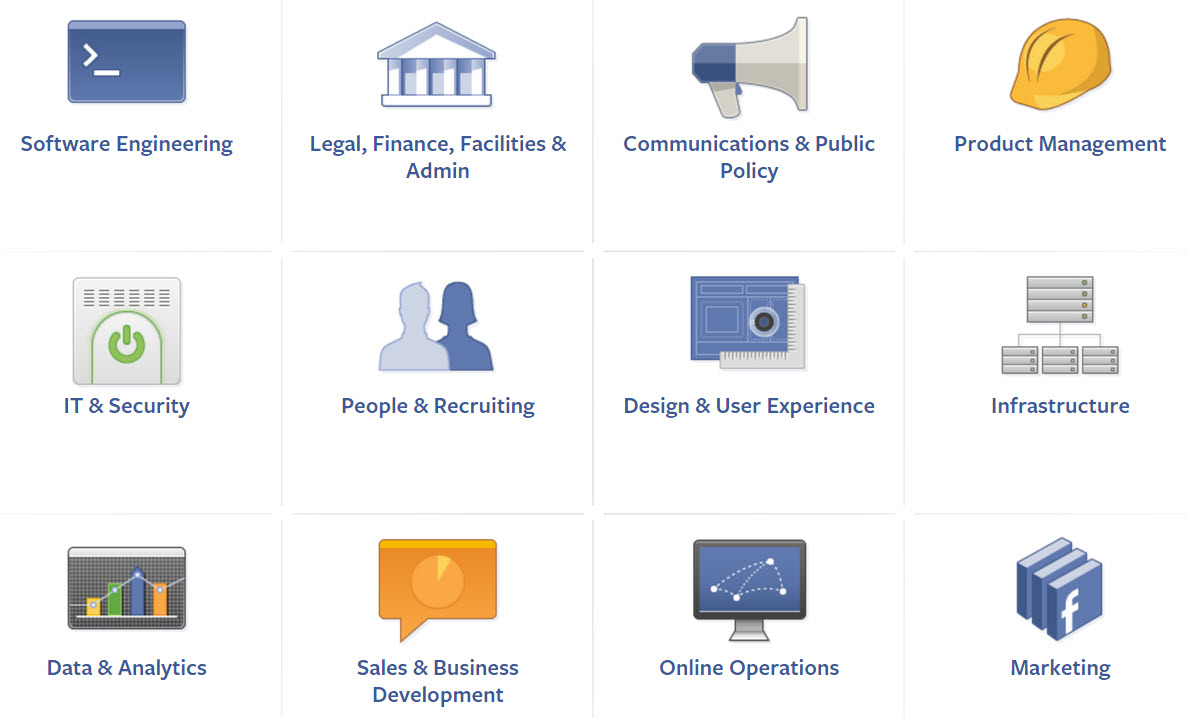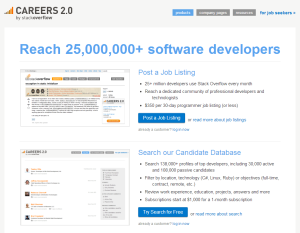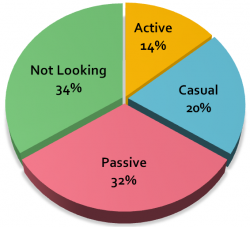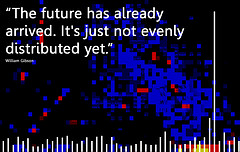 Most companies and staffing organizations, ranging from executive search sole proprietorships to staffing agencies to Fortune 500 companies, have internal databases filled with rich and actionable information on thousands to literally tens of millions of applicants, candidates, and professionals.
Most companies and staffing organizations, ranging from executive search sole proprietorships to staffing agencies to Fortune 500 companies, have internal databases filled with rich and actionable information on thousands to literally tens of millions of applicants, candidates, and professionals.
You would think that a private internal database of people that an organization has actively and passively, tactically and strategically collected over the years would be a prized posession and be viewed and leveraged as a significant resource and competitive advantage.
However, this post on Weddles details that an Online Sourcing Survey conducted by TalentDrive found that almost two-thirds (64%) of the employers represented by the survey’s participants did not know how many qualified candidates were in their own ATS databases.
Yes – you read that correctly.
Most companies don’t even know how many people are in their Applicant Tracking Systems.
Surprised?
While that is an especially disturbing statistic and a sad reality, I’m actually not that surprised.
Most Applicant Tracking Systems have horrible search interfaces and extremely limited information retrieval capability.
As such, like a black hole, prospective candidates go in, but they don’t come back out.
If you can’t easily search your internal database, how can you determine the total candidate population, let alone find the top talent hidden within?
Deposits and Withdrawals
Having an ATS/CRM/candidate database that is not highly searchable is like putting your money into an insolvent financial institution. You can deposit money/assets in – but you can’t easily or reliably make withdrawals.
The bottom line is that data has no value if you can’t retrieve it.
Anything designed to store something should have strong retrieval capability – once you put it in, you should expect to be able to get it back out.
Quickly and easily, no less.
If you can easily enter prospective candidates into your ATS but you cannot easily retrieve the right ones at the right time – you’re essentially sitting on a giant Hidden Talent Pool.
Illiquid Human Capital
Everyone agrees that people are an organization’s most valuable asset.
However, if you cannot quickly, easily, and precisely search for and retrieve highly qualified candidates from your private database, your ATS is essentially a source of illiquid (human) assets.
In other words, you cannot easily convert the human capital data stored in your system into hires/placements.
The Time Value of Resumes
Even after 15 years in recruiting, I am still shocked to hear HR pros, sourcers, recruiters, and talent acquisition leaders comment about how resumes get “stale” and lose their value after 6 months.
While the information on resumes certainly goes out of date over time, the resumes themselves do no lose their value.
In fact, I argue that resumes get more valuable over time.
This is because the active candidates you capture today become the passive and non job seekers in time – yes, those magical people that are supposedly so valuable and so difficult to find.
Right in your database.
With phone numbers and email addresses.
That person that responded to your job posting a year ago will not likely be actively looking today, will not have their resume posted online anywhere, and will not have updated their LinkedIn profile for quite some time – yet, you have their contact information, and it doesn’t take a rocket doctor to figure out what kind of opportunity they would be interested in.
Although you don’t know exactly what a person whose resume is a year or more old is doing now, most people follow a relatively predictable career trajectory.
I’ve personally dredged up resumes from an ATS that were over 4 years old and got them hired.
When I called one of these candidates, he asked me, “How did you know I was looking?” I replied, “I didn’t – your resume is 4 years old – I don’t even know if you’re doing the same kind of work.”
He was.
It also turned out he was beginning to think about making a change, but hadn’t even written his resume.
I had caught him at the perfect time, before anyone else could even imagine of finding him. The funny thing is that most people probably wouldn’t have even called him simply because his resume was “stale” and out of date.
This and many more similar examples I have prove the time value of resumes.
However, you can’t leverage the time value of resumes if you can’t quickly, easily, and precisely retrieve them!
Coal Into Diamonds
For each position sourced for and posted online, there are inevitably volumes of potential candidates that do not fit, as well as candidates that do not get interviewed and hired.
However, this does not mean that they are bad or unqualified people.
In fact, many of the people who respond to job postings are very good candidates – they’re just not very good at matching themselves.
Those under qualified candidates? While they may not meet the basic qualifications of the specific job the responded to, that doesn’t mean that they aren’t fully qualified for other jobs that are open now, or jobs that will open in the future.
In a year or two, they will have a year or two more experience and be a qualified candidate. See the Time Value of Resumes above.
What about those over qualified candidates? While they may be “over qualified” for the position they applied to – they may in fact be qualified for other openings now and in the future.
What about those applicants that are a complete mismatch for the positions they applied to? They often match other currently open and future jobs.
How about the people who almost got the job? For every opening, there can only be one hire, so there is often a slew of strong runners-up that could be fantastic candidates for other opportunities.
Over the years, I’ve consistently found time and again that what appears to be coal can quickly turn into diamonds.
The Black Hole
Just like light heading into a black hole, applicants and candidates often go into applicant tracking systems – but they don’t come back out.
Presumably, there are 3 main ways a person can end up in a company’s ATS:
- They responded to a job posting
- Someone ran a search and found the candidate’s profile/resume on the Internet, on a resume database such as Monster, Dice, Careerbuilder, etc., or on LinkedIn and entered it into the database
- The person was a referral and entered into the system
In all three cases, someone – either a potential candidate or a sourcer/recruiter – has shown interest in a potential match at some point in time, and this should be worth something.
People applying to jobs should be able to expect a response of some kind, and recruiters should be able to easily find well qualified candidates they found and entered into the system in the past.
Looking to Build a Talent Community?
Everyone seems to want to build a “talent community” these days.
What I find funny is that many companies are already sitting on the makings of a talent community in their own ATS.
Anyone in your ATS got there either because they wanted to join your company (they responded to a job posting) or because you wanted them to join your company (you sourced them).
Can you think of a better population for a talent community?
If your ATS doesn’t have CRM functionality that enables you to stay in touch with the people who’ve expressed interest in your company and the people you’d like to potentially employ, it’s time for you to start thinking about what you can do about this, because you’re sitting on a diamond mine.
Sourcer/Recruiter Behavior
Can we blame sourcers and recruiters for NOT searching and leveraging their ATS/CRM if other sources they may have access to (such as LinkedIn and job board resume databases) are 10X more searchable?
If trying to find appropriately qualified candidates in an ATS is as difficult and painful as pulling teeth, we should not be surprised when sourcers and recruiters search the Internet for candidates first, and the ATS last (if at all!).
A company’s private candidate database should, if anything, be MORE searchable and EASIER to use than publicly available systems and databases.
As mentioned previously – people in your ATS have either shown specific interest in your company or were found elsewhere by a sourcer or recruiter and entered into the system.
Both types of people should receive “priority handling!”
Demand an ROI on Your ATS!
Many companies spend tens of thousands to hundreds of thousands of dollars on their Applicant Tracking/CRM systems, and they should expect demand a significant return on that money invested.
I say that the value of a database lies not in the information contained within, but in the ability of a user to extract out precisely and completely what the user needs.
If you can’t easily, quickly, and precisely retrieve talent out of your ATS – you didn’t get what you actually paid for.
If you’ve been a corporate recruiter at some point in your career – did you ever have a 3rd party search firm/agency submit candidates to you that you already had in your ATS?
Did you know that some companies will pay a fee or a premium (contract to hire) for candidates that 3rd party firms source and recruit that were in fact hiding in the company’s ATS?
Without going into why companies would actually pay another firm for candidates they had buried in their ATS – the $64,000 question is why didn’t the corporate sourcers/recruiters find the candidate themselves?
The answer is usually quite simple – because the company’s ATS isn’t very searchable.
Perhaps it would be more accurate to call it the “20-30% of the first year’s salary” question.
Ouch!
What You Can Do
To ensure that your private candidate database/ATS isn’t just one big fat black hole where candidates enter but they never come back out, here are a few things you can do:
Replace or upgrade your ATS/CRM
Yes, this will likely involve spending money.
However, if people really are the greatest and most valuable asset of your organization – investing in a system that allows you to effectively capitalize on this asset is well worth the cost, nearly at any price!
From a corporate perspective, moving to a system that makes it easy to find appropriately qualified candidates that you have already sourced or expressed interest in your company can significantly reduce your cost-per-hire as well as your reliance on 3rd party search firms.
From a search firm/agency perspective, investing in replacing or upgrading your candidate database/tracking system can help increase your productivity (and likely profitability) by enabling you to more quickly and effectively capitalize on candidates you have already sourced, interviewed and qualified rather than having to try and source “new” candidates from scratch for each job order/client request you receive.
Integrate a New Search Interface/Engine Into Your ATS
Typically less expensive than switching out your whole ATS/CRM – there are several 3rd party search applications available ranging from highly configurable text search (Lucene, dtSearch, etc.) to conceptual/artificial intelligence search/match applications (Autonomy, BurningGlass, Sovren, Pure Discovery, Actonomy, etc.) that you can integrate into your existing ATS/CRM to significantly boost its “searchability.”
Some of the aforementioned solutions are free (Lucene) and others are surprisingly affordable.
Train Your Sourcers and Recruiters (AND/OR Yourself)!
Sometimes an ATS/CRM is a black hole from which candidates never return simply because the sourcers and recruiters aren’t very proficient in how to effectively search information systems for talent identification (aka Talent Mining).
If you already have a highly searchable ATS or CRM, invest in training your associates with the latest search best practices, tactics, and strategies.
You don’t need a super-expensive “state of the art” search application to quickly find the right people.
In fact – all you need is a search interface that supports full Boolean logic.
In my first year as an agency recruiter, I averaged 8 hires per month only after 3 months of experience as a recruiter – and my sole source of candidates was an old CPAS ATS developed by VCG. No Monster, no Google, no Linkedin, no cold calls – just a plain old resume database with about 80,000 records and a search interface that supported full Boolean logic.
How’s that for ROI?
The Bottom Line
If your ATS/CRM is as easy to search as it is to put candidates in, you will be able to fill more of your company’s openings from talent you’ve already sourced and from people who have expressed an interest in joining your company.
Any opening you can fill with candidates already in your internal system saves you the time, effort, and cost of advertising and searching for “new” candidates.
Filling openings with candidates already in your ATS can afford you significant and measurable cost-per-hire and time-to-fill savings.
Additionally, having a highly searchable ATS/CRM can help you reduce your reliance on paid resources if you currently use them (such as Monster, a premium LinkedIn account, etc.).
Is it easier to search public systems such as LinkedIn or Monster to find appropriately qualified candidates than it is to search your private ATS/CRM?
It shouldn’t be!



















 Imagine that you were just assigned a position to recruit for and that you needed to present 2 fully screened, highly qualified and well matched candidates within 5 business days.
Imagine that you were just assigned a position to recruit for and that you needed to present 2 fully screened, highly qualified and well matched candidates within 5 business days.